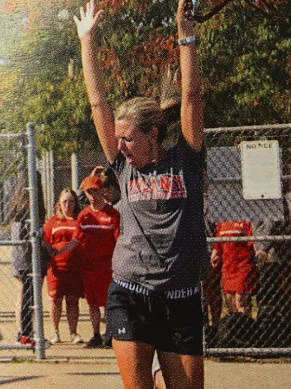
Posed in front of a dark background sits the headshot of a man, shaded in red. The piece is titled “Kamo,” and was created by artist and curator Simon Butler. This art is different from most art, though; the portrait of an Indigenous shaman was made from the ashes of the Amazon rainforest.
The portrait is part of a collective project titled ‘From the Ashes.’ Featuring 29 Indigenous and non-Indigenous artists, all the works were created using ink, pigment and pastels manufactured from ash and charcoal “salvaged from the burnt remnants of the Amazon,” says Migrate Art, a London-based social enterprise that created the project.
The goal of the project is to raise funds for Indigenous communities that have been negatively affected by the fires, according to CNN. Butler, who is the founder of Migrate Art, explains that the artists keep about 20% of what they make for necessities such as rent. The rest goes to the Xingu community, who are located in Brazil. Butler reports, “All these ideas of what to do with the money, they’re not coming from us[;] they’re coming from the community themselves. When we were there, we had meetings with them and they talked about the fire brigade they wanted to develop, and they also talked about regrowing trees and reforesting.”
Takumã Kuikuro, a filmmaker and curator from the Indigenous territory, calls the community “guardians of the forest.” The Amazon rainforest is essential to the Earth, according to Scientific American, because it helps trap and store carbon emissions that contribute to global warming. The non-profit Amazon Aid reports that the primary cause of wildfires in the Amazon rainforest is deforestation for agriculture, logging, and other economic opportunities.
Kuikuro states that the Xingu people are the main victims of climate change within the rainforest. “Since the violent fires of 2019 to 2022, we have been suffering from extreme heat and drought that threaten animals, trees, rivers and food crops such as cassava, the basis of our diet, which are not thriving due to lack of rain.”
This project is not the first exhibition that Butler has done; in 2020, he created ‘Scorched Earth,’ which featured art made from ashes of burnt crops in war zones in Iraqi Kurdistan, which are attributed to terrorist organizations as an “intimidation tactic.”
Migrate Art asks the question, “Can art change the world?” British artist Piers Secunda says that art is like a sharpened stick, which can “prod the right people into action… governments and individuals who are causing damage, or to raise funds.”
So, can art change the world? Sophomore Mia Siegel says yes. “Art allows people with all kinds of backgrounds and opinions to find common ground, whether that be to solve big issues or simply share that we are all not so different after all.”
Siegel continues, “I firmly believe that art always has been and always will be one of the only true ways to understand and appreciate one another. Art has and will continue to change both individual peoples’ lives and the world itself.”








